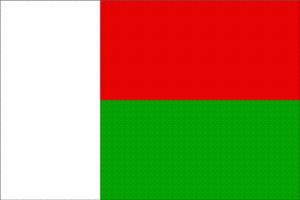Language/Plateau-malagasy/Grammar/Adverbs-and-Their-Usage
| ◀️ Comparative and Superlative Adjectives — Previous Lesson | Next Lesson — Modes of Transportation ▶️ |
Introduction[edit | edit source]
In this lesson, we will explore the fascinating world of adverbs in Plateau Malagasy. Adverbs play a crucial role in the language, as they provide additional information about verbs, adjectives, and other adverbs. Understanding how to use adverbs effectively will greatly enhance your ability to communicate in Plateau Malagasy. We will examine the formation and placement of adverbs, and provide plenty of examples to illustrate each point. By the end of this lesson, you will have a solid foundation in using adverbs in Plateau Malagasy.
Formation of Adverbs[edit | edit source]
Adverbs in Plateau Malagasy are formed in various ways. Let's take a look at some common formations:
1. Adverbs formed from adjectives: Many adverbs in Plateau Malagasy can be formed by adding the suffix "-na" to the corresponding adjective. For example:
| Plateau Malagasy | Pronunciation | English |
|---|---|---|
| andro | ˈandru | day |
| andro-na | ˈandruˌna | daily |
| teny | ˈteni | word |
| teny-na | ˈteniˌna | verbally |
| maitso | ˈmajt͡su | white |
| maitso-na | ˈmajt͡suˌna | whitely |
2. Adverbs formed from nouns: Some adverbs in Plateau Malagasy are formed by adding the suffix "-n'i" to the corresponding noun. For example:
| Plateau Malagasy | Pronunciation | English |
|---|---|---|
| mpiasa | ˈmpʲasə | worker |
| mpiasa-n'i | ˈmpʲasəˌni | like a worker (worker-like) |
| olona | uˈlunə | person |
| olona-n'i | uˈlunəˌni | like a person (person-like) |
| ankizy | aŋˈkʲitsʲʲ | child |
| ankizy-n'i | aŋˈkʲitsʲʲˌni | like a child (child-like) |
3. Adverbs formed with prefixes: Some adverbs in Plateau Malagasy are formed by adding a prefix to a verb or adjective. For example:
| Plateau Malagasy | Pronunciation | English |
|---|---|---|
| mandeha | mə̥nˈdʲehə | to go |
| hanao | hə̥ˈnaw | to do |
| mifanaraka | mɨfə̥naɾaːkə̥ | to be together |
| miala | mɨˈala | to cross |
| mividy | mɨˈvidʲʲ | to buy |
| tafiditra | tafidˈdʲitɾ̥ | to enter |
Placement of Adverbs[edit | edit source]
In Plateau Malagasy, adverbs can be placed in different positions within a sentence. Let's explore the various possibilities:
1. Adverbs modifying verbs: Adverbs that modify verbs are typically placed immediately before the verb. For example:
- Tsy hitako izany teny izany intsony. (I can no longer see those words.)
- Manana toko telo aho. (I have three cats.)
2. Adverbs modifying adjectives: Adverbs that modify adjectives are usually placed immediately before the adjective. For example:
- Mahavariana ny zava-nitranga azy. (Her performance is exceptionally good.)
- Tsara ny hery-n-dry Zanahary. (God's power is good.)
3. Adverbs modifying other adverbs: Adverbs that modify other adverbs are commonly placed immediately before the adverb they modify. For example:
- Mifanohitra tsara ny fisehoan'ny biby ireo. (The animals' behavior is very different.)
- Matetika indrindra no misy fanomanana teny hoe "misaotra". (The word "thank you" is often used.)
4. Adverbs at the beginning or end of a sentence: Adverbs can also be placed at the beginning or end of a sentence for emphasis. For example:
- Mandehana eran'izao! (Go away now!)
- Hahafantatrao ny valin'ny zavatra rehefa ho tafiditrao. (You will know the result when you enter.)
Cultural Insights[edit | edit source]
The usage and understanding of adverbs in Plateau Malagasy can vary slightly across different regions. For example, in some regions, certain adverbs may be used more frequently or have additional meanings. Historical and cultural factors can influence these regional variations.
In Plateau Malagasy culture, storytelling plays an important role, and adverbs are often used to add richness and vividness to narratives. Skilled storytellers use adverbs to create suspense, convey emotions, and paint detailed pictures in the minds of their listeners. Adverbs are also used in traditional songs and poetry to enhance the rhythm and lyrical quality of the language.
Practice Exercises[edit | edit source]
Now, let's practice using adverbs in Plateau Malagasy. Choose the correct adverb to complete each sentence:
1. Mifanaraka tsara ny ____ ireo fianarana ireo. (The lessons are always interesting.)
- a) andevo
- b) mandeha
- c) mandimby
- d) ankizy
Solution: c) mandimby
2. Tsy mifanohitra amin'ny ____ ny fotoana. (Time does not always correlate.)
- a) teny
- b) olona
- c) fahafahana
- d) fiseho
Solution: d) fiseho
3. Samy ____ ny zavatra rehetra eto. (Everything is equally important here.)
- a) mandeha
- b) mifanaraka
- c) mahavariana
- d) mividy
Solution: b) mifanaraka
4. Tsy hitako ____ izany. (I can't see it anymore.)
- a) miala
- b) mifanohitra
- c) mandeha
- d) tafiditra
Solution: c) mandeha
5. Ankehitriny, misy ____ ny rano. (Today, the water is very cold.)
- a) mahavariana
- b) tafiditra
- c) mpitsidika
- d) tsara
Solution: a) mahavariana
Conclusion[edit | edit source]
Congratulations! You have successfully learned about adverbs in Plateau Malagasy. You now have a solid understanding of their formation and placement in sentences. Adverbs are powerful tools that can greatly enhance your communication skills in Plateau Malagasy. Keep practicing and exploring the language, and you will continue to improve. In the next lesson, we will delve into the world of travel and transportation in Plateau Malagasy.
Other Lessons[edit | edit source]
- Questions
- Give your Opinion
- Pronouns and Their Usage
- Conjunctions and Their Usage
- Conditional Mood
- Nouns and Gender
- How to Use Be
- Gender
- Pronouns
- Basic Sentence Structure
Template:Plateau-malagasy-Page-Bottom
| ◀️ Comparative and Superlative Adjectives — Previous Lesson | Next Lesson — Modes of Transportation ▶️ |

